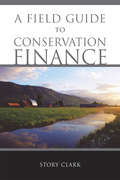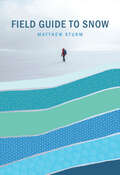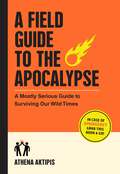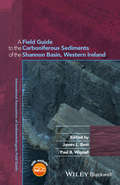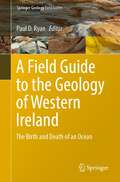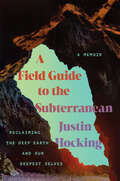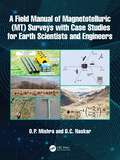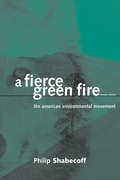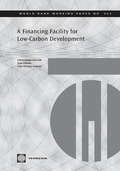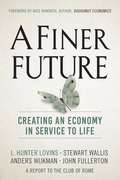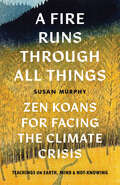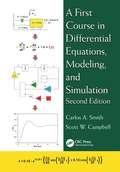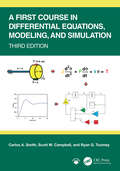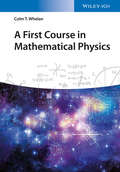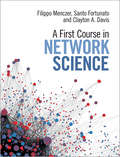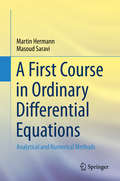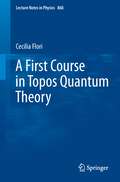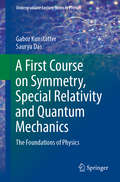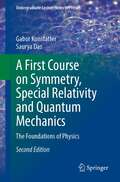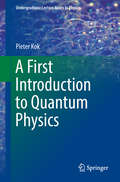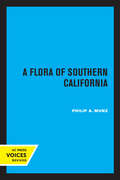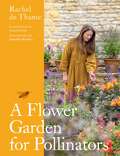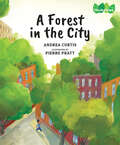- Table View
- List View
A Field Guide to Conservation Finance
by Roger C. Altman Story ClarkFinally, a comprehensive book on land conservation financing for community and regional conservation leaders. A Field Guide to Conservation Finance provides essential advice on how to tackle the universal obstacle to protecting private land in America: lack of money. Story Clark dispels the myths that conservationists can access only private funds controlled by individuals or that only large conservation organizations have clout with big capital markets. She shows how small land conservation organizations can achieve conservation goals using both traditional and cutting-edge financial strategies. Clark outlines essential tools for raising money, borrowing money, and reducing the cost of transactions. She covers a range of subjects including transfer fees, voluntary surcharges, seller financing, revolving funds, and Project Related Investment programs (PRIs). A clear, well-written overview of the basics of conservation finance with useful insights and real stories combine to create a book that is an invaluable and accessible guide for land trusts seeking to protect more land.
A Field Guide to Snow (Snowy Owl)
by Matthew SturmPeople love snow. They love to ski and sled on it, snowshoe through it, and watch it fall from the sky. They love the way it blankets a landscape, making it look tranquil and beautiful. Few people, however, know how snow works. What makes it possible for us to slip and slide over, whether that’s falling on sidewalks or skiing down a mountain? What makes it cling to branches and street signs? What qualities of snow lead to avalanches? In A Field Guide to Snow, veteran snow scientist Matthew Sturm answers those questions and more. Drawing on decades of study, he explains in clear and simple ways how and why snow works the way it does. The perfect companion a ski trip or a hike in the snowy woods, A Field Guide to Snow will give you a new appreciation for the science behind snow’s beauty.
A Field Guide to the Apocalypse: A Mostly Serious Guide to Surviving Our Wild Times
by Athena AktipisA common sense field guide to understanding, surviving, and thriving in our time of complex chaos and crises. Is this finally it? The end times?Because from COVID-19 to climate catastrophe to the looming AI revolution—not to mention the ever-growing background hum of rage, fear, and anxiety—it&’s starting to feel like the party we call civilization is just about over. The good news? It&’s always felt that way. Drawing on evolutionary psychology, history, brain science, game theory, and more, cooperation theorist (and, coincidentally, zombie expert) Athena Aktipis reassuringly explains how we, as a species, are hardwired to survive big existential crises. And how we can do so again by leveraging our innate abilities to communicate and cooperate. Pack a ukulele in your prep kit. Practice your risk-management skills. Enlist your crew into a survival team. And embrace the apocalypse. You might just enjoy it. Plus, it will help us build a better and more resilient future for all humankind.
A Field Guide to the Carboniferous Sediments of the Shannon Basin, Western Ireland (International Association Of Sedimentologists Series)
by James L. Best Paul B. WignallThe Carboniferous Shannon Basin of Western Ireland has become one of the most visited field areas in the world. It provides an ideal opportunity for examining a wide range of ancient sedimentary environments, including carbonate shelf, reefs and mud mounds, black shales and phosphates, and a spectrum of deep sea, shallow marine, fluvio-deltaic and alluvial siliciclastic sediments. The area boasts extensive outcrops and some of the most renowned sections through turbidites, large-scale soft sediment deformation features and sediments that display a response to tectonic and sea-level controls. This field guide provides the first synthesis of the principal localities in this area of Western Ireland, and presents an easily accessible handbook that will guide the reader to, and within, a wide range of sedimentary facies, allowing an understanding of the evolving nature of the fill of this Carboniferous basin and the context of its sedimentary and tectonic evolution. The guide summarizes recent and new work in the area by a range of authors and outlines issues of current debate concerning the Shannon Basin and its palaeoenvironmental interpretation. The field guide will find extensive use in teaching and research by academic researchers, professional and amateur geologists, as well as by applied geologists, geophysicists and reservoir engineers who use these outcrops as analogues for subsurface reservoirs in many areas of the world.
A Field Guide to the Geology of Western Ireland: The Birth and Death of an Ocean (Springer Geology)
by Paul D. RyanThis book contains a comprehensive field guide, including detailed itineraries and supporting data, to the Geology of Western Ireland, a classic site for world geology. It facilitates study into the rock record of the Neoproterozoic ‘birth’ to the Devonian ‘death’ of the Iapetus Ocean along the Laurentian (North American) margin. The enormous variety of lithologies and processes available for study in this spectacularly exposed region include: fluviatile to deep-sea sediments; layered ultramafic intrusions to reverse zoned granite batholiths; zeolite to eclogite facies metamorphic assemblages; continental rifting; subduction processes; island arc evolution; arc-continent collision; Andean margin development; and continent-continent collision. An introduction to the geology, that includes information relevant to the planning and execution of field trips in the region, is followed by nine chapters each providing the necessary background, field itineraries, exercises and points for debate, covering: the Laurentian basement and Neoproterozoic cover of North Mayo, Sligo, the Ox Mountains and Connemara; the metamorphic nappes and syn-orogenic intrusions of the Ordovician Grampian Orogeny; the Cambro-Ordovician subduction-accretion complex of Clew Bay; the obducted Ordovician fore-arc basin of South Mayo; the post-subduction flip late-Ordovician of South Connemara; the Silurian successor basins deformed during the final closure of the Iapetus Ocean; the late to post-orogenic Devonian sediments; the Devonian Granite batholiths ; and the post-orogenic Carboniferous cratonic sediments. Two final chapters summarise: the current tectonic interpretation of this region; areas for future research; and the extensive sources of geochemical and geophysical data.
A Field Guide to the Subterranean: Reclaiming the Deep Earth and our Deepest Selves
by Justin HockingA radically inventive excavation of one man&’s life and our relationship to the earth by the critically acclaimed author of The Great Floodgates of the Wonderworld Justin Hocking grew up in a part of Colorado where so many things happened beneath the surface—mining exploits, underground nuclear testing just thirty miles from his family&’s home, and geothermal activity that heats one of the world&’s largest hot spring pools. His homelife, too, was plagued by hidden patterns of abuse and virulent masculinity. A Field Guide to the Subterranean charts the author&’s lifelong process of unearthing the past and reclaiming his own identity and connection to the natural world.How might we transform our traumas into deeper care for one another and the landscapes that sustain us? How do we transcend the mythos of the rugged American male so rooted in extraction and exploitation? And how far can we move beyond the self in a memoir? Hocking explores these and other vital questions by combining personal introspection with expansive narratives that examine geology, ecology, gender theory, mining history, labor rights, and even skateboarding. Abundant with historical research and teeming with birdlife—and ranging in location from remote caves and mountains to secluded surf breaks in Costa Rica—A Field Guide to the Subterranean heralds a boldly original and kaleidoscopic approach to the genres of memoir and nature writing.
A Field Manual of Magnetotelluric (MT) Surveys with Case Studies for Earth Scientists and Engineers
by O. P. Mishra D. C. NaskarThis book details both conventional and advanced geophysical techniques with description of the Electromagnetic (EM) based physics involved in different methodologies of magnetotellurics (MT). It offers detailed discussions of the theory of EM and MT methods, and the operation of specific instruments, including the presentation of results and their interpretation in tabular format. The chapters describe the conceptual background of MT geophysical methods along with the related instrumentation, sufficient illustrations, and the applicability of the individual methodologies supported by successful case histories.Features: Provides a comprehensive introduction to the MT–geophysical method. Covers diverse geotectonic settings with several case studies, supported by diagrams and data tables. Describes the fundamentals of uncontrollable telluric and controllable non-telluric sources used in MT surveys. Reviews MT methods with emphasis on recent improvements, recognizing both static and distortion effects and their treatment in the analysis of impedance tensors in 3-D inversion codes. Explores integrated MT interpretation coupled with seismic and potential (gravity, magnetic) geophysical methods. This book is aimed at professionals, students, and researchers in geophysics, geology, civil, mechanical, petroleum, and geothermal engineering, and other branches of earth and environmental sciences.
A Fierce Green Fire: The American Environmental Movement
by Philip ShabecoffIn A Fierce Green Fire, renowned environmental journalist Philip Shabecoff presents the definitive history of American environmentalism from the earliest days of the republic to the present. He offers a sweeping overview of the contemporary environmental movement and the political, economic, social, and ethical forces that have shaped it. More importantly, he considers what today's environmental movement needs to do to fight off powerful oppositional forces and succeed in its mission of protecting the American people, their habitat, and their future.Shabecoff traces the ecological transformation of North America as a result of the mass migration of Europeans to the New World, showing how the environmental impulse slowly formed among a growing number of Americans until, by the last third of the 20th Century, environmentalism emerged as a major social and cultural movement. He examines the efforts of key environmental figures -- among them Henry David Thoreau, Theodore Roosevelt, Aldo Leopold, and Rachel Carson -- as well as the activities of non-governmental environmental groups, government agencies such as the EPA and Interior Department, and grassroots efforts by communities across America.Originally published in 1993, this new edition brings the story up to date with an analysis of how the of George W. Bush administration sought to dismantle a half-century of progress in protecting the land and its people, and a consideration of the growing international effort to protect Earth's life-support systems and the obstacles the United States government is placing before that effort.Now, when environmental law, institutions, and values are under increased attack and opponents of environmentalism are enjoying overwhelming political and economic power A Fierce Green Fire is a vital reminder of how far we have come in protecting our environment and how much we have to lose.
A Financing Facility for Low-Carbon Development in Developing Countries
by Philippe Ambrosi Ivan ZelenkoThis paper proposes an innovative financing mechanism, known as the Low Carbon Development Facility (LCDF) that would bring additional investment financing at concessional rates to unlock low carbon development projects in non-Annex 1 countries, increasing project-based emissions avoidance in these countries. The LCDF could be a modality of the Copenhagen Green Climate Fund to implement the financial pledges made by Annex 1 countries as a result of Copenhagen and post-COP15 negotiations to support projects, programs, policies and/or other activities in developing countries related to NAMAs. LCDF will not substitute the Global Environment Facility (GEF) and the Clean Technology Fund (CTF) and would rather support the innovative projects pioneered by these instruments.
A Finer Future: Creating an Economy in Service to Life
by John Fullerton Kate Raworth Anders Wijkman L. Lovins Stewart WallisHUMANITY is in a race with catastrophe. Is the future one of global warming, 65 million migrants fleeing failed states, soaring inequality, and grid-locked politics? Or one of empowered entrepreneurs and innovators building a world that works for everyone? <P><P>While the specter of collapse looms large, A Finer Future demonstrates that humanity has a chance - just - to thread the needle of sustainability and build a regenerative economy through a powerful combination of enlightened entrepreneurialism, technology, and innovative policy. <P><P>The authors - world leaders in business, economics, and sustainability - gather the evidence, outline the principles of a regenerative economy, and detail a policy roadmap to achieving it, including: <P><P>Transforming finance and corporations Reimagining energy, agriculture, and the nature of how we work, Enhancing human well-being, Delivering a world that respects ecosystems and human community. <P><P>Charting the course to a regenerative economy is the most important work facing humanity and A Finer Future provides the essential blueprint for business leaders, entrepreneurs, environmentalists, politicians, policymakers, and others working to create a world that works for people and the planet. L. HUNTER LOVINS is Time Magazine's Millennium Hero for the Planet, President and Founder of Natural Capitalism Solutions, and co-author of The Way Out and the best-selling Natural Capitalism. STEWART WALLIS is Executive Chair of the Wellbeing Economy Alliance; Honorary Professor at Lancaster University; and former Executive Director of the New Economics Foundation. He now leads a new initiative to create a global wellbeing economic movement. ANDERS WIJKMAN is Co-President of the Club of Rome; Chair of Climate-KIC, the largest publicprivate partnership for climate innovation in the EU; and author of Bankrupting Nature and Come On! JOHN FULLERTON is founder and President of Capital Institute, and a former Managing Director at JP Morgan. He is also the author of Regenerative Capitalism: How Universal Principles and Patterns Will Shape our New Economy .
A Fire Runs through All Things: Zen Koans for Facing the Climate Crisis
by Susan MurphyAt a time of climate emergency, Zen koans show us how crisis itself can reveal the regenerative openness of life, mind, and being.Zen koans are a tradition of holistic inquiry based on &“encounter stories&” from East Asia&’s most radical Buddhist tradition. Turning this form of inquiry toward the climate crisis, Susan Murphy contends that koans can help us enter the mind of not-knowing, from which acceptance and possibility freely emerge. Koans reveal intimate, mythic, artful, playful, provocative, humorous, and fierce ways to engage the work of protecting and healing our world.The koans point firstly at ourselves—at the very nature of "self." Until we hold &“self&” as a live question rather than its own unquestioned answer, we&’re stuck looking on from the &“outside,&” hoping to engineer change upon a problem called &“climate crisis,&” all the time oblivious to the fact that we&’re swimming in a reality with no outside to it, an ocean of transformative energy. Do we dare relinquish our wish for absolute control and fearlessly surf the intensity of our feelings about the suffering earth?In addition to her use of dozens of traditional and new koans, Murphy illuminates the little-known Zen resonance with the oldest continuous body of indigenous wisdom on earth, summed up in the subtle Australian Aboriginal word Country. Murphy draws from her study and coteaching with Uncle Max (Dulumunmun) Harrison, a distinguished Yuin Elder, to show how this millennia-deep taproot of intelligence confirms the aliveness of the earth and the kinship of all beings.
A First Course in Differential Equations, Modeling, and Simulation
by Carlos A. Smith Scott W. CampbellA First Course in Differential Equations, Modeling, and Simulation shows how differential equations arise from applying basic physical principles and experimental observations to engineering systems. Avoiding overly theoretical explanations, the textbook also discusses classical and Laplace transform methods for obtaining the analytical solution of
A First Course in Differential Equations, Modeling, and Simulation
by Carlos A. Smith Scott W. Campbell Ryan G. ToomeyA First Course in Differential Equations, Modeling, and Simulation shows how differential equations arise from applying basic physical principles and experimental observations to engineering systems. Avoiding overly theoretical explanations, the textbook also discusses classical and Laplace transform methods for obtaining the analytical solution of differential equations. In addition, the authors explain how to solve sets of differential equations where analytical solutions cannot easily be obtained. Incorporating valuable suggestions from mathematicians and mathematics professors, the third edition: Reworks the chapter “Response of First and Second Order Systems” to include the system response to step changes, impulses, rectangular pulses, and sinusoid forcing functions as well as the response of coupled first- and second-order ordinary differential equations (ODEs); it also introduces Bode plots to analyze the frequency response of second-order ODEs and the principle of oscillation modes in coupled second-order ODEs Adds a new section on springs and dampers in series or parallel Includes new content on Simulink® and modeling Contains new exercises that can be used as projects and answers to many of the end-ofchapter problems Features new end-of-chapter problems and updates throughout This textbook provides students with a practical understanding of how to apply differential equations in modern engineering and science.A solutions manual and files of all figures in the text are available to adopting professors.
A First Course in Mathematical Physics
by Colm T. WhelanThe book assumes next to no prior knowledge of the topic. The first part introduces the core mathematics, always in conjunction with the physical context. In the second part of the book, a series of examples showcases some of the more conceptually advanced areas of physics, the presentation of which draws on the developments in the first part. A large number of problems helps students to hone their skills in using the presented mathematical methods. Solutions to the problems are available to instructors on an associated password-protected website for lecturers.
A First Course in Network Science
by Filippo Menczer Santo Fortunato Clayton A. DavisNetworks are everywhere: networks of friends, transportation networks and the Web. Neurons in our brains and proteins within our bodies form networks that determine our intelligence and survival. This modern, accessible textbook introduces the basics of network science for a wide range of job sectors from management to marketing, from biology to engineering, and from neuroscience to the social sciences. Students will develop important, practical skills and learn to write code for using networks in their areas of interest - even as they are just learning to program with Python. Extensive sets of tutorials and homework problems provide plenty of hands-on practice and longer programming tutorials online further enhance students' programming skills. This intuitive and direct approach makes the book ideal for a first course, aimed at a wide audience without a strong background in mathematics or computing but with a desire to learn the fundamentals and applications of network science.
A First Course in Ordinary Differential Equations: Analytical and Numerical Methods
by Martin Hermann Masoud SaraviThis book presents a modern introduction to analytical and numerical techniques for solving ordinary differential equations (ODEs). Contrary to the traditional format--the theorem-and-proof format--the book is focusing on analytical and numerical methods. The book supplies a variety of problems and examples, ranging from the elementary to the advanced level, to introduce and study the mathematics of ODEs. The analytical part of the book deals with solution techniques for scalar first-order and second-order linear ODEs, and systems of linear ODEs--with a special focus on the Laplace transform, operator techniques and power series solutions. In the numerical part, theoretical and practical aspects of Runge-Kutta methods for solving initial-value problems and shooting methods for linear two-point boundary-value problems are considered. The book is intended as a primary text for courses on the theory of ODEs and numerical treatment of ODEs for advanced undergraduate and early graduate students. It is assumed that the reader has a basic grasp of elementary calculus, in particular methods of integration, and of numerical analysis. Physicists, chemists, biologists, computer scientists and engineers whose work involves solving ODEs will also find the book useful as a reference work and tool for independent study. The book has been prepared within the framework of a German-Iranian research project on mathematical methods for ODEs, which was started in early 2012.
A First Course in Random Matrix Theory: for Physicists, Engineers and Data Scientists
by Jean-Philippe Bouchaud Marc PottersThe real world is perceived and broken down as data, models and algorithms in the eyes of physicists and engineers. Data is noisy by nature and classical statistical tools have so far been successful in dealing with relatively smaller levels of randomness. The recent emergence of Big Data and the required computing power to analyse them have rendered classical tools outdated and insufficient. Tools such as random matrix theory and the study of large sample covariance matrices can efficiently process these big data sets and help make sense of modern, deep learning algorithms. Presenting an introductory calculus course for random matrices, the book focusses on modern concepts in matrix theory, generalising the standard concept of probabilistic independence to non-commuting random variables. Concretely worked out examples and applications to financial engineering and portfolio construction make this unique book an essential tool for physicists, engineers, data analysts, and economists.
A First Course in Topos Quantum Theory (Lecture Notes in Physics #868)
by Cecilia FloriIn the last five decades various attempts to formulate theories of quantum gravity have been made, but none has fully succeeded in becoming the quantum theory of gravity. One possible explanation for this failure might be the unresolved fundamental issues in quantum theory as it stands now. Indeed, most approaches to quantum gravity adopt standard quantum theory as their starting point, with the hope that the theory's unresolved issues will get solved along the way. However, these fundamental issues may need to be solved before attempting to define a quantum theory of gravity. The present text adopts this point of view, addressing the following basic questions: What are the main conceptual issues in quantum theory? How can these issues be solved within a new theoretical framework of quantum theory? A possible way to overcome critical issues in present-day quantum physics - such as a priori assumptions about space and time that are not compatible with a theory of quantum gravity, and the impossibility of talking about systems without reference to an external observer - is through a reformulation of quantum theory in terms of a different mathematical framework called topos theory. This course-tested primer sets out to explain to graduate students and newcomers to the field alike, the reasons for choosing topos theory to resolve the above-mentioned issues and how it brings quantum physics back to looking more like a "neo-realist" classical physics theory again.
A First Course on Symmetry, Special Relativity and Quantum Mechanics: The Foundations of Physics (Undergraduate Lecture Notes in Physics)
by Gabor Kunstatter Saurya DasThis book provides an in-depth and accessible description of special relativity and quantum mechanics which together form the foundation of 21st century physics. A novel aspect is that symmetry is given its rightful prominence as an integral part of this foundation. The book offers not only a conceptual understanding of symmetry, but also the mathematical tools necessary for quantitative analysis. As such, it provides a valuable precursor to more focused, advanced books on special relativity or quantum mechanics.Students are introduced to several topics not typically covered until much later in their education.These include space-time diagrams, the action principle, a proof of Noether's theorem, Lorentz vectors and tensors, symmetry breaking and general relativity. The book also provides extensive descriptions on topics of current general interest such as gravitational waves, cosmology, Bell's theorem, entanglement and quantum computing.Throughout the text, every opportunity is taken to emphasize the intimate connection between physics, symmetry and mathematics.The style remains light despite the rigorous and intensive content. The book is intended as a stand-alone or supplementary physics text for a one or two semester course for students who have completed an introductory calculus course and a first-year physics course that includes Newtonian mechanics and some electrostatics. Basic knowledge of linear algebra is useful but not essential, as all requisite mathematical background is provided either in the body of the text or in the Appendices. Interspersed through the text are well over a hundred worked examples and unsolved exercises for the student.
A First Course on Symmetry, Special Relativity and Quantum Mechanics: The Foundations of Physics (Undergraduate Lecture Notes in Physics)
by Gabor Kunstatter Saurya DasThis book provides an in-depth and accessible description of special relativity and quantum mechanics which together form the foundation of 21st century physics. A novel aspect is that symmetry is given its rightful prominence as an integral part of this foundation. The book offers not only a conceptual understanding of symmetry, but also the mathematical tools necessary for quantitative analysis. As such, it provides a valuable precursor to more focused, advanced books on special relativity or quantum mechanics.Students are introduced to several topics not typically covered until much later in their education.These include space-time diagrams, the action principle, a proof of Noether's theorem, Lorentz vectors and tensors, symmetry breaking and general relativity. The book also provides extensive descriptions on topics of current general interest such as gravitational waves, cosmology, Bell's theorem, entanglement and quantum computing.Throughout the text, every opportunity is taken to emphasize the intimate connection between physics, symmetry and mathematics.The style remains light despite the rigorous and intensive content. The book is intended as a stand-alone or supplementary physics text for a one or two semester course for students who have completed an introductory calculus course and a first-year physics course that includes Newtonian mechanics and some electrostatics. Basic knowledge of linear algebra is useful but not essential, as all requisite mathematical background is provided either in the body of the text or in the Appendices. Interspersed through the text are well over a hundred worked examples and unsolved exercises for the student.
A First Introduction to Quantum Physics (Undergraduate Lecture Notes in Physics)
by Pieter KokIn this undergraduate textbook, the author develops the quantum theory from first principles based on very simple experiments: a photon travelling through beam splitters to detectors, an electron moving through a Stern-Gerlach machine, and an atom emitting radiation. From the physical description of these experiments follows a natural mathematical description in terms of matrices and complex numbers. The first part of the book examines how experimental facts force us to let go of some deeply held preconceptions and develops this idea into a mathematical description of states, probabilities, observables, and time evolution using physical applications. The second part of the book explores more advanced topics, including the concept of entanglement, the process of decoherence, and extension of the quantum theory to the situation of a particle in a one-dimensional box. Here, the text makes contact with more traditional treatments of quantum mechanics. The remaining chapters delve deeply into the idea of uncertainty relations and explore what the quantum theory says about the nature of reality. The book is an ideal and accessible introduction to quantum physics, with modern examples and helpful end-of-chapter exercises.
A Flora of Southern California
by Philip A. MunzThis title is part of UC Press's Voices Revived program, which commemorates University of California Press’s mission to seek out and cultivate the brightest minds and give them voice, reach, and impact. Drawing on a backlist dating to 1893, Voices Revived makes high-quality, peer-reviewed scholarship accessible once again using print-on-demand technology. This title was originally published in 1974.
A Flower Garden for Pollinators: Learn how to sustain and support nature with this practical planting guide
by Rachel de ThameThe perfect guide for any gardener looking for inspiration on how to create a pollinator-friendly garden all year round.Pollinators are essential to life on Earth. Yet bees, butterflies and other beneficial insects are struggling due to climate change and habit loss. Fortunately, what we choose to plant in our gardens can help them to thrive. In this heartfelt guide, horticulturalist and Gardener's World presenter Rachel de Thame highlights plants we can grow that are rich in nectar and pollen, ensuring the garden is filled with beautiful flowers for us all to enjoy year-round.Arranged by season and illustrated with exquisite hand-painted watercolours and glorious photography showcasing many of Rachel's favourite plants, this book provides a captivating look at how best to support nature. Whether you have a small urban courtyard or a large country garden, A Flower Garden for Pollinators will guide your choice of plants, attracting a host of pollinators to your own patch of paradise.'A wonderful journey through the magical world of plants.' - Frances Tophill
A Flower Garden for Pollinators: Learn how to sustain and support nature with this practical planting guide
by Rachel de ThameThe perfect guide for any gardener looking for inspiration on how to create a pollinator-friendly garden all year round.Pollinators are essential to life on Earth. Yet bees, butterflies and other beneficial insects are struggling due to climate change and habit loss. Fortunately, what we choose to plant in our gardens can help them to thrive. In this heartfelt guide, horticulturalist and Gardener's World presenter Rachel de Thame highlights plants we can grow that are rich in nectar and pollen, ensuring the garden is filled with beautiful flowers for us all to enjoy year-round.Arranged by season and illustrated with exquisite hand-painted watercolours and glorious photography showcasing many of Rachel's favourite plants, this book provides a captivating look at how best to support nature. Whether you have a small urban courtyard or a large country garden, A Flower Garden for Pollinators will guide your choice of plants, attracting a host of pollinators to your own patch of paradise.'A wonderful journey through the magical world of plants.' - Frances Tophill
A Forest in the City (ThinkCities #1)
by Andrea CurtisThis beautiful book of narrative non-fiction looks at the urban forest and dives into the question of how we can live in harmony with city trees. “Imagine a city draped in a blanket of green … Is this the city you know?” A Forest in the City looks at the urban forest, starting with a bird’s-eye view of the tree canopy, then swooping down to street level, digging deep into the ground, then moving up through a tree’s trunk, back into the leaves and branches. Trees make our cities more beautiful and provide shade but they also fight climate change and pollution, benefit our health and connections to one another, provide food and shelter for wildlife, and much more. Yet city trees face an abundance of problems, such as the abundance of concrete, poor soil and challenging light conditions. So how can we create a healthy environment for city trees? Urban foresters are trying to create better growing conditions, plant diverse species, and maintain trees as they age. These strategies, and more, reveal that the urban forest is a complex system—A Forest in the City shows readers we are a part of it. Includes a list of activities to help the urban forest and a glossary. The ThinkCities series is inspired by the urgency for new approaches to city life as a result of climate change, population growth and increased density. It highlights the challenges and risks cities face, but also offers hope for building resilience, sustainability and quality of life as young people act as advocates for themselves and their communities. Key Text Features diagrams author's note glossary sources definitions Correlates to the Common Core State Standards in English Language Arts: CCSS.ELA-LITERACY.RI.4.7 Interpret information presented visually, orally, or quantitatively (e.g., in charts, graphs, diagrams, time lines, animations, or interactive elements on Web pages) and explain how the information contributes to an understanding of the text in which it appears.
